In one of our most recent posts, we delved into the Fatal 5 of construction injuries in Australia. In order to overcome or prevent fatal injuries on-site, certain precautionary measures have to be put in place to safeguard all workers’ safety on-site. Below are some recommendations to overcome the five most common fatal injuries on Australian construction sites.
In a report published on October 2015 by Safe Work Australia, the fatal five consist of the following:
- Falling from heights (27.82%)
- Vehicular incidents (16.09%)
- Electrocution (14.48%)
- Getting hit by moving objects (11.95%)
- Getting hit by falling objects (11.72%)
Enforcing fall protection regulations
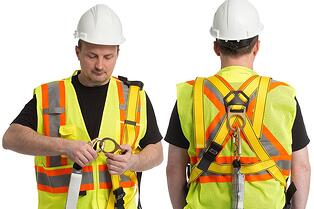 Non-compliance to fall regulations is rare in the construction industry, but there are still some workers – even experienced ones – who opt to not follow the rules. The tips below will help you enforce fall protection regulations on-site.
Non-compliance to fall regulations is rare in the construction industry, but there are still some workers – even experienced ones – who opt to not follow the rules. The tips below will help you enforce fall protection regulations on-site.
2. All employees should undergo hands-on safety training before starting work
3. Find out what motivates your team members to follow rules
4. Provide your workers with safety equipment or tools that are comfortable and easy-to-use
5. Penalise non-compliance and make it a rule
You can read up more about the tips above on our recent post, ‘Quick tips to enforce fall protection regulations on-site’.
Preventing vehicular incidents on-site
There are lots of ways to prevent vehicular incidents from happening on-site. Creating a traffic management plan (TMP) which outlines ways to manage traffic in and around the work site. You can read up more about traffic management plans on our previous post, ‘Increase site safety with traffic management plans’.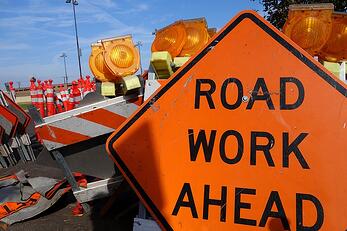
Most vehicular incidents happen on road projects, and the points below are the key measures to help you safeguard your team while working on roads.
- Don’t forget about the motorists
- Protect your workers
- Modification Factor
- A.D.S (Flow, Attention, Direction and Separation)
To know more about the points above, check out our post ‘Key measures to safeguard your team on road projects’.
Be cautious when working with electricity
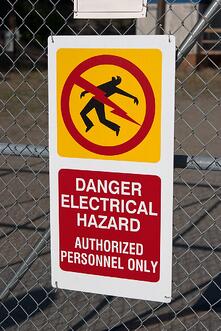 Between 2003 and 2014, 63 fatal electrocution incidents were reported. In order to prevent electrocution incidents on the job site, certain precautions should be followed.
Between 2003 and 2014, 63 fatal electrocution incidents were reported. In order to prevent electrocution incidents on the job site, certain precautions should be followed.
Here are a few things you can do to prevent electrocution:
- Wear protective gear when handling electric wires
- Make sure that any power source is turned off before touching electrical wires
- Properly train your team on how to handle and go about tasks that involves electricity
You can read up on our previous post – Five key areas that will help perfect your onsite safety – to get more tips on how to prevent your workers from getting electrocuted while working.
Staying clear from moving objects on-site
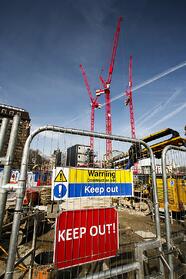
There were 52 cases of fatalities caused by getting hit by moving objects between 2003 and 2014. These types of incidents are sometimes inevitable, but they can be prevented.
Here are a few ways to prevent injuries and fatalities caused by getting hit by moving objects:
- Make sure that loads are secured properly before moving them
- Install warning or caution signs around the work site
- When moving heavy equipment around, use a spotter to guide you
Prevent injuries casued by falling objects
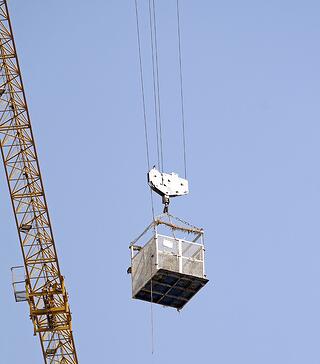
51 cases of fatal incidents caused by falling objects were reported between 2003 and 2014. Preventive measures are now being enforced on job sites to minimise accidents involving objects falling on workers or civilians.
Some safety precautions being imposed on job sites include:
- Installing overhead safety nets to catch falling debris
- Always wear protective gear such as hard hats while on the job site
- Installation of warning signs in and around the construction site
These are just some of the things you can do to prevent injuries caused by falling objects. Read here for more tips to prevent incidents involving falling objects.
Keeping both workers and civilians safe from any on-site incident is important. Fatal injuries are not only traumatising to some, but it can be costly for your company as well when production is halted due to an accident. A thorough risk assessment prior to the beginning of work is recommended so that any risk found can be facilitated and resolved. Download the free Risk Assessment Checklist below which will help you carefully check your site for any risk factors.

Related Articles

Quick tips to enforce fall protection regulations on-site
Without a doubt, working in construction has increased hazards compared to other industries, making safety regulations an ever-topical discussion point among construction companies. This has never been more true than with employees working at heights. When working feet above ground, workers should comply with the fall protection regulations set by site managers as these rules will keep everyone safe from accidents and from falling off a high structure.

The fatal five construction injuries in Australia
Each year there are hundreds of workplace accidents and dozens of workplace injury-related fatalities. The construction industry is an incredible dangerous one. And within the construction industry, there are five accident types that are particularly deadly. These have often been termed constructions 'fatal five'.

Distracted operators and the toll on fleet managers
Civil construction relies on a range of heavy excavation and earthmoving equipment. Operator distraction is a significant danger to the safe operation of this equipment, leading to serious crash-related injuries, delays in work progress and damage to other plant and equipment on-site. As our dependency on technology increases, so does the temptation to participate in distracting activities. Unfortunately, modern construction sites present equipment operators with continuous opportunities for distraction as well.
Get the latest project news
- updates on Australia's pipeline of state and federal projects
- fresh contract awards from major contractors and builders
If you're looking to contact us about other matters, please contact us.


